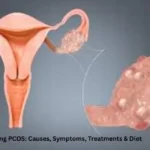Pneumonia is a serious lung infection that affects millions of people in the United States every year. It happens when the delicate alveoli (air sacs) inside the lungs fill with fluid in lungs or pus, making it hard for the body to get enough oxygen. This condition causes discomfort, breathing problems, and can even be life-threatening if not treated in time.
Doctors explain that pneumonia is more than just a seasonal respiratory infection because it often leads to hospital visits and long recovery times. Understanding the causes, recognizing the warning signs, and getting early treatment are the best steps toward prevention and faster recovery.
What Is Pneumonia?

Pneumonia is an infection that inflames the alveoli (air sacs) inside one or both lungs. When inflamed, the sacs may fill with fluid in lungs or pus. This makes it hard for oxygen to pass into the bloodstream, causing shortness of breath and fatigue. The condition may start as a mild respiratory infection but can worsen quickly if ignored.
In the United States, pneumonia is one of the top causes of hospitalization for older adults. According to the CDC, more than a million Americans need hospital care every year due to pneumonia. The seriousness of the condition depends on age, immune health, and the type of bacterial lung infection, viral lung infection, or fungal infection causing the illness.
Causes of Pneumonia
The causes of pneumonia are linked to several different germs. Bacterial lung infection is the most common type, often triggered by Streptococcus pneumoniae, also known as pneumococcal infection. Viruses such as influenza or COVID-19 can lead to a viral lung infection that inflames the lungs. In rare cases, fungi from the environment may also cause a pulmonary infection.
Sometimes pneumonia happens because of aspiration, when a person accidentally breathes food, saliva, or liquid into the lungs. This is called aspiration pneumonia. Risk factors such as smoking, weakened immune systems, chronic illnesses, and exposure in hospitals all increase the chance of developing pneumonia. The risk factors of pneumonia are highest among the elderly, infants, and people with heart or lung problems.
Types and Classification of Pneumonia

Doctors classify pneumonia based on how it develops. Community-acquired pneumonia (CAP) happens outside hospitals and is the most common type seen in the U.S. Hospital-acquired pneumonia (HAP) occurs during hospital stays and is usually more resistant to treatment. Patients who rely on ventilators may also develop ventilator-associated pneumonia.
Other types include walking pneumonia, which is mild but persistent, and aspiration pneumonia, caused by inhaling particles into the lungs. Knowing the classification helps doctors choose the right pneumonia treatment guidelines, especially when deciding which antibiotics for pneumonia or antivirals should be prescribed.
Symptoms of Pneumonia
The symptoms of pneumonia in adults may start suddenly or develop slowly. Common signs include persistent cough, chest pain with cough, high fever and chills, fatigue, and shortness of breath pneumonia. Some patients may also experience confusion or blue lips caused by low oxygen levels.
In pneumonia in children and elderly, the signs may look different. Babies might not show strong symptoms except for trouble feeding and tiredness. Older adults may feel weak or confused rather than showing a strong fever. This makes it essential to seek medical help whenever breathing problems or sudden changes in health occur.
Diagnosis of Pneumonia

Doctors use diagnosis and tests for pneumonia to confirm the illness. A physical exam may reveal crackling sounds in the lungs. A chest X-ray diagnosis is usually the first imaging test to check for inflammation of lungs and fluid buildup. In some cases, CT scans give a clearer picture of the infection.
Blood tests, sputum cultures, and oxygen level checks also help doctors decide whether it is a bacterial lung infection or a viral lung infection. Early testing improves chances of recovery because it ensures the correct lung disease treatment is given right away.
Treatment of Pneumonia
The right pneumonia treatment guidelines depend on the cause. Antibiotics for pneumonia are effective when the infection is bacterial. Viral cases may need antivirals, while fungal infections are treated with antifungals. Doctors may also recommend pain relievers and fever reducers to help patients feel better.
Home treatment includes home remedies for pneumonia such as rest, hydration, and steam inhalation to ease breathing difficulties. Severe cases need hospital care, where patients may receive oxygen therapy, IV antibiotics, or breathing support. The recovery time after pneumonia ranges from 2 to 6 weeks, depending on age and health.
Complications of Pneumonia

Ignoring treatment can lead to dangerous complications of pneumonia. Pleural effusion occurs when excess fluid builds up around the lungs, making breathing even harder. In some cases, abscesses may form in lung tissue, requiring drainage or surgery.
One of the most serious risks is sepsis, a life-threatening infection that spreads through the bloodstream. Another concern is pneumonia mortality risk, especially in elderly patients. Early care and correct treatment reduce these risks significantly.
Prevention of Pneumonia
Doctors highlight several pneumonia prevention tips for Americans. Getting vaccines for pneumonia is the most effective way to reduce risk, especially the pneumococcal vaccine and the annual flu shot. These vaccines are highly recommended for children, seniors, and people with chronic illnesses.
Healthy lifestyle choices also matter. Quitting smoking, eating nutritious food, exercising, and practicing good hygiene lower the chance of infection. Simple steps such as handwashing and avoiding contact with sick people can protect against both the flu and difference between flu and pneumonia complications.
Living with Pneumonia & Recovery Tips
Recovering from pneumonia requires patience and care. Doctors suggest drinking plenty of fluids, eating light but nutritious meals, and avoiding alcohol or smoking. Gentle breathing exercises can help lungs heal faster after inflammation of lungs.
Most patients see gradual improvement, but pneumonia recovery may take weeks. Those with underlying illnesses may need longer rest. Following medical advice, attending follow-up appointments, and staying alert for new symptoms of pneumonia in adults or in children help prevent relapse.
Pneumonia and Your Lungs – Long-Term Impact
Understanding how pneumonia affects lungs is important for long-term health. Some patients may fully recover, while others could develop scarring in lung tissue. This increases the chance of chronic breathing problems such as COPD.
Doctors note that repeat cases of pulmonary infection weaken lung capacity. People who had severe pneumonia may experience shortness of breath pneumonia long after recovery. Preventive care, healthy lifestyle habits, and regular checkups reduce the chance of lasting damage.
FAQs
How to recover from pneumonia fast?
Rest, stay hydrated, take prescribed medicines, and follow your doctor’s advice for faster healing. Proper sleep and nutrition speed up pneumonia recovery.
How long is pneumonia contagious?
Pneumonia caused by bacteria or viruses may be contagious for up to 7–10 days, depending on the germ and treatment response.
What is the survival rate for pneumonia?
Most healthy adults recover well, with survival rates over 90%. Risk rises for elderly and those with weak immunity.
How to prevent pneumonia?
Get vaccines for pneumonia, practice good hygiene, eat healthy, quit smoking, and avoid close contact with sick people.
What are the first warning signs of pneumonia?
Early signs include chest pain with cough, fever, fatigue, and shortness of breath that worsens quickly.
Should I stay away from someone with pneumonia?
Yes, keep distance if it’s a contagious type, especially viral lung infection or bacterial lung infection.
What is the main cause of pneumonia?
The main causes of pneumonia are bacteria, viruses, or fungi infecting the lungs.
What not to eat during pneumonia?
Avoid alcohol, oily fried food, sugary drinks, and processed items, as they weaken immunity and slow lung disease treatment.
How long does it take lungs to clear after pneumonia?
Most lungs heal in 4–6 weeks, though full recovery may take longer in elderly or patients with other illnesses.
How do I confirm I have pneumonia?
A doctor confirms it with diagnosis and tests for pneumonia such as a chest X-ray diagnosis, blood work, or sputum test.
What are red flags for pneumonia?
Danger signs include confusion, high fever, bluish lips, severe breathing difficulties, or chest pain that worsens.
What is the strongest antibiotic for pneumonia?
Doctors may prescribe strong antibiotics for pneumonia such as azithromycin, levofloxacin, or ceftriaxone, depending on the infection type.
Conclusion
Pneumonia is more than just a respiratory infection. It is a serious lung disease treatment challenge that can impact people of all ages. By recognizing the causes of pneumonia, learning the symptoms of pneumonia in adults and children, and following pneumonia prevention tips, you can protect yourself and your loved ones.
With early diagnosis and tests for pneumonia, timely pneumonia treatment guidelines, and proper self-care, full recovery is possible. Vaccines, lifestyle changes, and awareness are the keys to reducing the pneumonia mortality risk in the USA. Taking action today can save lives tomorrow.
10 Healthiest Heart Diets for Better Heart Health (USA Guide)





LeonBet steht f�r Vielfalt, Qualit�t und Benutzerfreundlichkeit.